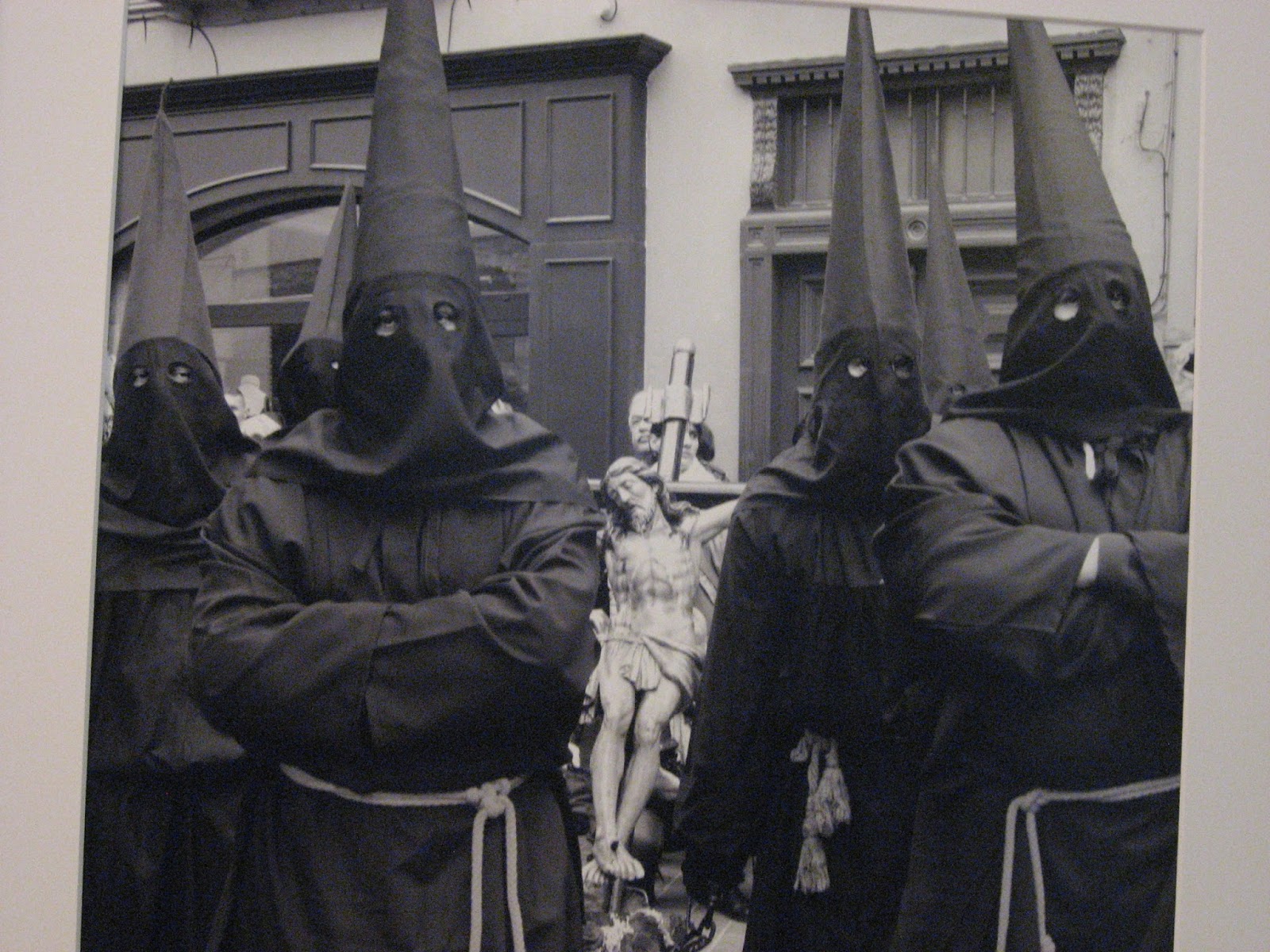Catalan Perpignan, on the Mediterranean sunbelt, has a distinctly southern feel, with palm trees lining the Têt river promenade, house and store façades painted vibrant turquoise and pink, and the streets of the Arab quarter selling aromatic spices, cous-cous, and paella.

Gendarmes have all the fun! They can press a button and "presto", the "piton" goes down and the police vehicle can go through.
Perpignan's strong Catalan identity (Spanish) is evident during the twice-weekly summer celebrations when the Sardana is danced in the place de la Loge. It is a key Catalan symbol. Arms raised, concentric circles of dancers keep step to the accompaniment of a Catalan woodwind band.
 |
| The Sardana Courtesy of Wikipedia |
The Café is right next to the Cathédrale St-Jean.
Topped by a wrought iron belfry, this cathedral was begun in 1324 and was finally ready for use in 1509. It is constructed almost entirely from river pebbles layered with red brick, a style common throughout the region due to the scarcity of other building materials.
There is a very Catalan atmosphere in Perpignan during the annual Good Friday procession of the Confraternity of La Sanch (Brotherhood of the Holy Blood). Originally dedicated to the comfort of condemned prisoners in the 15th century, members of the brotherhood still wear macabre red or black robes as they carry sacred relics and the crucifix from the Chapel of the Devout Christ to the cathedral. This procession passes right by the Café Saint Jean and I took these photos from the walls of the café.
 |
| It evokes thoughts of the Ku Klux Klan. |
 |
| Macabre, but eerie and unsettling as well. |
 |
| Typical head cover for Catalan women. |
A photographer could take photos in Syria, for example, which are well executed, with the right lighting and the right focus, but would not be considered photojournalism. The 5 Ws (who, what, where, when, why) must be addressed to make the photo fit into the photojournalism category. These photos witness the living history of events around the world and bring them to our attention through various media.
At this exhibit, we were allowed to take photos of the photos, but the lighting was quite dim, all the photos were under glass which caused reflection, and after a while, the pictures were very disturbing and captured all of our attention. Being completely absorbed in the moment did not give us the incentive to be removed from the photo long enough to take pictures.
There were some 10 venues used to display the photos. They covered the gamut of what is happening now, as well as what has happened over the past 25 years.
Women learning to read, fathers and sons smoking opium together, wars in so many corners of the world, poor medical facilities functioning as trauma centres, children starving, rampant disease, lack of water, unwanted refugees, and the list goes on. "There but for the grace of God go I."
One of the most difficult series of photos was the mentally ill people in Indonesia and how they are treated. Chained, caged, starving, dirty, without sanitary facilities, packs of rats roaming at night... Most have never been seen by a doctor, let alone a psychiatrist. Even children are confined to these horrible places when they have other types of physical problems, whether that's Downs Syndrome or autism.
It's one thing to see stacked dead bodies and severed limbs in a war situation, but it's extremely emotional to witness the indignities we willingly bring to bear onto our fellow human beings.
There was an entire section dedicated to the lions of the Serengeti, a National Geographic section. At first I couldn't see the connection, but I suppose as living creatures, we are all involved in a fight for life, in a do or die scenario. The biggest and the strongest always gets the upper hand.
When we realize the percentage of the world population that is involved in a conflict or difficult living conditions, we feel shame in considering our daily problems so significant. It really doesn't matter what kind of house we have, what model of car we drive, or what job we hold. There is SO much to be grateful for that we have shelter, clothing, food, health care, clean water, education, and that we feel safe. How did we get so lucky that we are living in "this part of the world".





















No comments:
Post a Comment